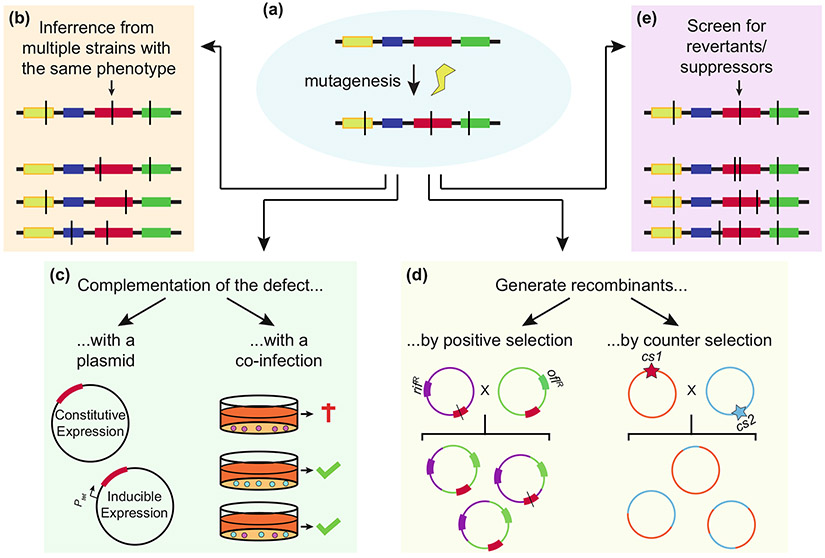Fig. 1.
Mutation mapping in chlamydia. a Chemical mutagenesis strategies can result in multiple mutations (denoted by black lines). Multiple approaches can resolve which mutation(s) (shown in red) are linked to a phenotype. b Additional mutants with the same phenotype that have different mutant alleles of the same gene can be isolated. c A plasmid that expresses the wild-type allele of the gene can be used to complement the phenotype. Alternately, co-infection with wild-type chlamydia and/or ectopic expression of the gene in host cells can be used to complement phenotypes associated with secreted effectors, inclusion membrane transporters, or enzymes that detoxify the inclusion. d LGT can generate recombinants using endogenous antibiotic resistance or counter-selectable alleles. e Continued passage of a mutant in detrimental screening conditions can also generate revertants and intragenic suppressors that can identify genes linked to detrimental phenotypes (Nelson, unpublished). The original mutation is indicated by the arrow.

